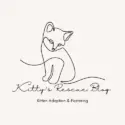Weaning kittens is a crucial stage in their development, demanding patience, understanding, and a gentle approach. This transition from mother’s milk to solid food requires careful planning and observation to ensure healthy growth and a smooth transition into adulthood. Successfully navigating this period hinges on understanding the kitten’s developmental cues, providing nutritious food, and maintaining a clean and stimulating environment.
The process of weaning naturally begins around three to four weeks of age, although this timeframe can vary slightly depending on the breed and the mother cat’s milk supply. Initially, kittens will exhibit a growing interest in their surroundings, becoming more mobile and curious about their environment and, importantly, the food available to them. This is often signaled by them sniffing, pawing, and even attempting to lick the food placed in front of them. It’s during this initial phase that you, as the caregiver, can subtly introduce them to the world of solid food.
Introducing Solid Foods Gradually
The most important aspect of weaning kittens is a gradual transition. Sudden changes to their diet can lead to digestive upset and reluctance to accept new foods. Start by offering a high-quality kitten formula specifically designed for weaning. These are usually formulated to be easily digestible and provide all the essential nutrients for proper growth. You can find this at most pet stores. Begin by offering a small amount of the mixture on a shallow dish or a flat plate. The consistency should be relatively soft, almost like a paste, to make it easy for the small kittens to lap up.
Over the next few days, gradually increase the consistency, adding less liquid until the kitten food resembles a wet food or pâté consistency. Observe the kitten’s eating habits; some may accept the new food immediately, while others might take a few days, or even weeks, to fully transition. Don’t force them to eat it; instead gently encourage them with a little patience and persistence. If they aren’t interested, try a different brand of kitten food or a different flavor to see if that appeals to their palate.
Monitoring the Mother Cat’s Role
While you’re introducing solid foods, remember the mother cat still plays a vital role. She’ll continue nursing her kittens, offering essential antibodies and nutrients through her milk. This process naturally tapers off over several weeks as the kittens become more reliant on solid food. It’s important not to abruptly separate mother and kittens during this period as it can cause stress for both. Allow the mother cat to be involved in the process, ensuring there are no aggressive interactions and that she can adequately care for her litter.
Continue to offer the kitten formula for several weeks even after the kittens start eating solid food regularly. This provides a supplement to their solid food intake, ensuring they continue to receive a balanced diet during this critical period of development. A gradual reduction of nursing and introduction to solids ensures a smooth transition.
Signs Your Kitten is Ready for Weaning
Several signs indicate that your kitten is prepared for weaning. These include a significant increase in curiosity regarding their surroundings, showing an interest in what other animals eat, and actively trying to eat from adult plates. Physical growth also plays a role, as healthy kittens will grow bigger and stronger, their bodies demonstrating a natural progression of growth that reflects their emerging need for more substantial nutrition beyond mother’s milk.
Moreover, observe their ability to swallow and digest solid foods. If they show signs of discomfort after eating solid food, such as vomiting or diarrhea, re-evaluate the consistency of the food and reduce intake. Consult with a veterinarian if you have concerns about the kitten’s bowel movements or overall health.
Specialized Care for Weaning Kittens
It’s not uncommon to encounter orphaned kittens or those whose mothers are unable to provide sufficient lactation. In these cases, specialized care is needed. You’ll likely require a kitten replacement milk formula, tailored to the unique nutritional needs of the orphans. These formulas are readily available at pet supply stores and veterinary clinics.
Moreover, hand-feeding may be necessary, requiring careful attention to technique to prevent choking and ensure proper nutrition. Consider a syringe, kitten bottle, or even an eyedropper to feed the diluted formula, depending on the kitten’s age and size. In such instances, regular veterinary checks are essential to address any emerging health concerns.
Weaning Kittens: A Crucial Transition
Weaning kittens is a critical stage in their development, requiring close attention to detail. By introducing solid food gradually, providing a balanced diet, and monitoring the kitten’s health closely, you can ensure a smooth and stress-free transition into the next phase of their lives. Remember, patience, consistency, and attention to detail are vital elements in providing your kittens with the foundation for a healthy and happy future. Always consult with a veterinarian if you experience any concerns throughout the weaning process.

